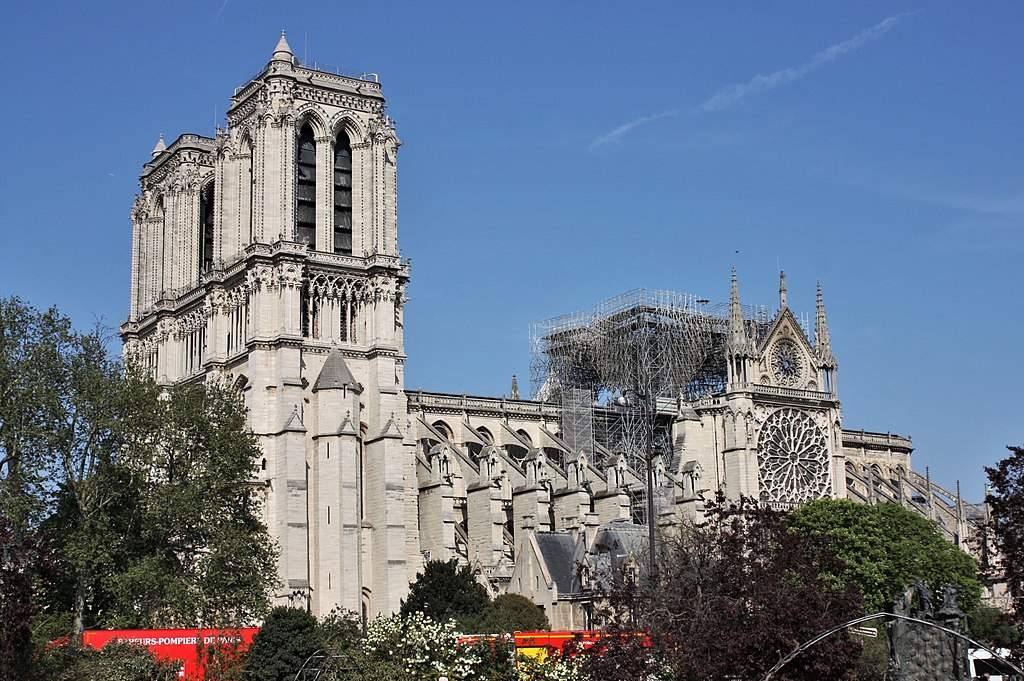With the fire at Notre-Dame in Paris finally extinguished and the securing of the building nearing completion, it is time in France to think about the future of the cathedral: today a council of ministers was held entirely dedicated to Notre-Dame, and it was determined that work will now be done to understand how to manage and facilitate the massive donations announced by so many people around the world. Initial estimates seem to indicate that the amount of damage exceeds €1 billion, but at the same time pledges of donations have already exceeded this figure: the costs, which would fall to the French state as the owner of the building (moreover, Notre-Dame was not insured) are likely to be largely covered by handouts from private individuals and large corporations (600 million has already been pledged by four major donors the Arnault family and Louis Vuitton, 200 million; the Bettencourt family and L’Oreal, 200 million; the Pinault family, 100 million; and the Total company, 100 million). Public finances will also contribute: the City of Paris will guarantee 50 million euros, the Île-de-France region 10 million, and other donations will come from French public entities (regions, municipalities, departments). There will be tax breaks for those who donate, but some, such as the Pinault family, have already let it be known that they will waive their share of tax benefits.
As for the timing of the reconstruction, the president of the French republic, Emmanuel Macron, hopes that the interventions will take five years, but more conservative estimates speak of a time frame of about ten years, which could, however, stretch to twenty. And before starting with the work, it will be necessary to accurately estimate the damage, assess the regulatory framework of procedures and also figure out how to rebuild (the debate has already opened). As for materials, in order to reconstruct theancient roof of Notre-Dame, the very famous “forêt,” or “forest,” as it was nicknamed because of the abundance of wood used and the intricate structure (contrary to what many people think, it was not the result of reconstructions, but was still largely the original 1220 the architect Eugène Viollet-le-Duc, in the 19th century, intervened only on portions of the transept), it would require the equivalent of the 1.300 oaks that were used for the construction: at least 3,000 cubic meters of lumber, according to the Charlois Group, France’s leading producer of oak wood. The Groupama insurance company, which also owns several pieces of land, has let it be known that it will provide just 1,300 oaks from its Normandy properties. A lot of manpower will be needed: the site will probably employ about five hundred workers, according to initial estimates.
It was then announced that a commission would be set up to manage the reconstruction. At the moment, the government has opened a website dedicated to donations, to prevent them from being dispersed in multiple trickles, and has empowered four entities to collect funds (the Centre des monuments nationaux, the Fondation Notre-Dame, the Fondation du patrimoine, and the Fondation de France). The French prime minister, Édouard Philippe, has since let it be known that there will be an international competition of architects to determine from which will emerge the name of Viollet-le-Duc’s “successor.”
Meanwhile, as of today, companies specializing in the removal of rubble are at work in the building: fallen debris in the nave will be removed, but above all, the greatest attention is for the roof rubble left over the vaults (in fact, it is feared that their weight, weighing down on the stone structure, could cause subsidence if not even collapse). Also, some good news: yesterday afternoon the bronze rooster that stood on top of the flèche, the spire destroyed by the fire, was found. It was feared to have been destroyed or melted in the flames, but it was actually found almost intact under the rubble, only a little dented. However, it is not known whether the relics contained within it (a thorn from Christ’s crown, a relic of St. Genevieve, and a relic of St. Dionysius) survived the fire. And similarly, the fate of the individual masterpieces housed in the church is still uncertain: for now, only confusing news is leaking out.
Pictured, Notre-Dame after the fire. Ph. Credit
 |
| Notre-Dame, renovations will need 1 billion euros. Macron wants to rebuild it in five years |
Warning: the translation into English of the original Italian article was created using automatic tools. We undertake to review all articles, but we do not guarantee the total absence of inaccuracies in the translation due to the program. You can find the original by clicking on the ITA button. If you find any mistake,please contact us.